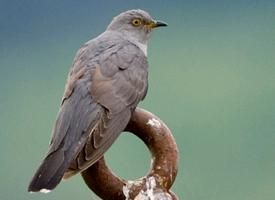
Poids et mesures
| Longueur | de 33 à 34 cm |
|---|
Description de l'animal
The Common Cuckoo (Cuculus canorus) is a fascinating and somewhat enigmatic bird species known for its distinctive call that heralds the arrival of spring in many parts of the world. This bird belongs to the Cuculidae family, which includes cuckoos, roadrunners, and anis. The Common Cuckoo is particularly famous for its brood parasitism behavior, a unique reproductive strategy that has intrigued scientists and bird enthusiasts alike.Physically, the Common Cuckoo is a medium-sized bird, measuring about 32 to 34 cm in length, with a wingspan of approximately 55 to 60 cm. The males have a sleek, gray plumage with a slightly paler underside, while the females can vary significantly in color. Some females exhibit a similar gray coloration to males, but others may display a reddish-brown morph, making them more camouflaged in certain environments. Both sexes have long, pointed wings and a long tail with a round end, which are adaptations for their migratory lifestyle.
One of the most remarkable aspects of the Common Cuckoo's biology is its parasitic breeding behavior. Instead of building their own nests, female cuckoos lay their eggs in the nests of other bird species. They are meticulous in choosing a host, often selecting species with similar egg color and size to their own, which helps to increase the chances of their eggs being accepted. Once a cuckoo egg is successfully integrated into a host nest, the cuckoo chick hatches earlier than its nestmates and instinctively pushes the other eggs or chicks out of the nest, ensuring it receives all the food and care from the unsuspecting foster parents.
The Common Cuckoo's diet mainly consists of insects, with a particular preference for caterpillars, which they find in meadows, open woodland, and farmland. Their long, curved bill is perfectly adapted for plucking these larvae from leaves and branches.
Vocally, the male Common Cuckoo is well-known for its distinctive "cu-coo" call, from which its name derives. This simple, yet powerful call serves as a territorial signal to other males and as a means of attracting a mate. The female, on the other hand, has a bubbly chuckle, which is less often heard.
The Common Cuckoo is a migratory species, spending its breeding season across Europe and Asia, and then migrating to sub-Saharan Africa for the winter. This annual journey is a testament to the bird's resilience and adaptability, navigating vast distances between vastly different habitats.
In terms of conservation status, the Common Cuckoo is currently listed as of Least Concern by the International Union for Conservation of Nature (IUCN), although its populations are believed to be declining in some areas. This decline is thought to be due to changes in agricultural practices that affect the availability of its insect prey and suitable host species for its parasitic breeding.
In conclusion, the Common Cuckoo is a bird of great interest and complexity, from its distinctive sounds that mark the seasons, to its unique reproductive strategy that challenges our understanding of parental care in the animal kingdom. Its presence across diverse habitats and its role in cultural lore and literature further cement its status as an iconic species within the avian world.
Carte de répartition
Animaux similaires
Nouvelles photos d'animaux
Top 10 des animaux
- Dolphin gull (Leucophaeus scoresbii)
- Diana monkey (Cercopithecus diana)
- Moustached guenon (Cercopithecus cephus)
- Galápagos tortoise (Geochelone nigra complex)
- Stone loach (Barbatula barbatula)
- Japanese macaque (Macaca fuscata)
- Russian tortoise (Testudo horsfieldii)
- Greek tortoise (Testudo graeca)
- Common flying dragon (Draco volans)
- Vendace (Coregonus albula)

